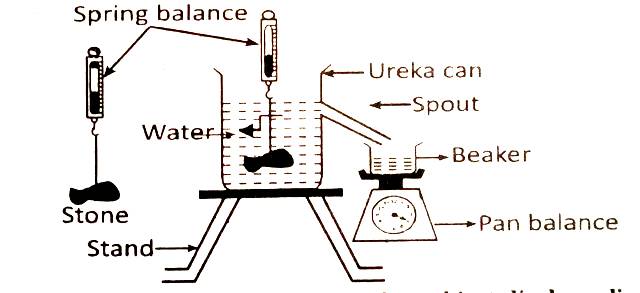Draw a well labelled diagram to show Archimedes principle.
1 Answer
A well labelled diagram to show Archimedes principle is given below : Archimedes' principle, physical law of buoyancy, discovered by the ancient Greek mathematician and inventor Archimedes, stating that any body completely or partially submerged in a fluid (gas or liquid) at rest is acted upon by an upward, or buoyant, force, the magnitude of which is equal to the weight of the fluid.
A body at rest in a fluid is acted upon by a force pushing upward called the buoyant force, which is equal to the weight of the fluid that the body displaces. If the body is completely submerged, the volume of fluid displaced is equal to the volume of the body. If the body is only partially submerged, the volume of the fluid displaced is equal to the volume of the part of the body that is submerged.
Archimedes' principle is very useful for calculating the volume of an object that does not have a regular shape. The oddly shaped object can be submerged, and the volume of the fluid displaced is equal to the volume of the object. It can also be used in calculating the density or specific gravity of an object. For example, for an object denser than water, the object can be weighed in air and then weighed when submerged in water. When the object is submerged, it weighs less because of the buoyant force pushing upward. The object's specific gravity is then the object's weight in air divided by how much weight the object loses when placed in water. But most importantly, the principle describes the behaviour of any body in any fluid, whether it is a ship in water or a balloon in air.


